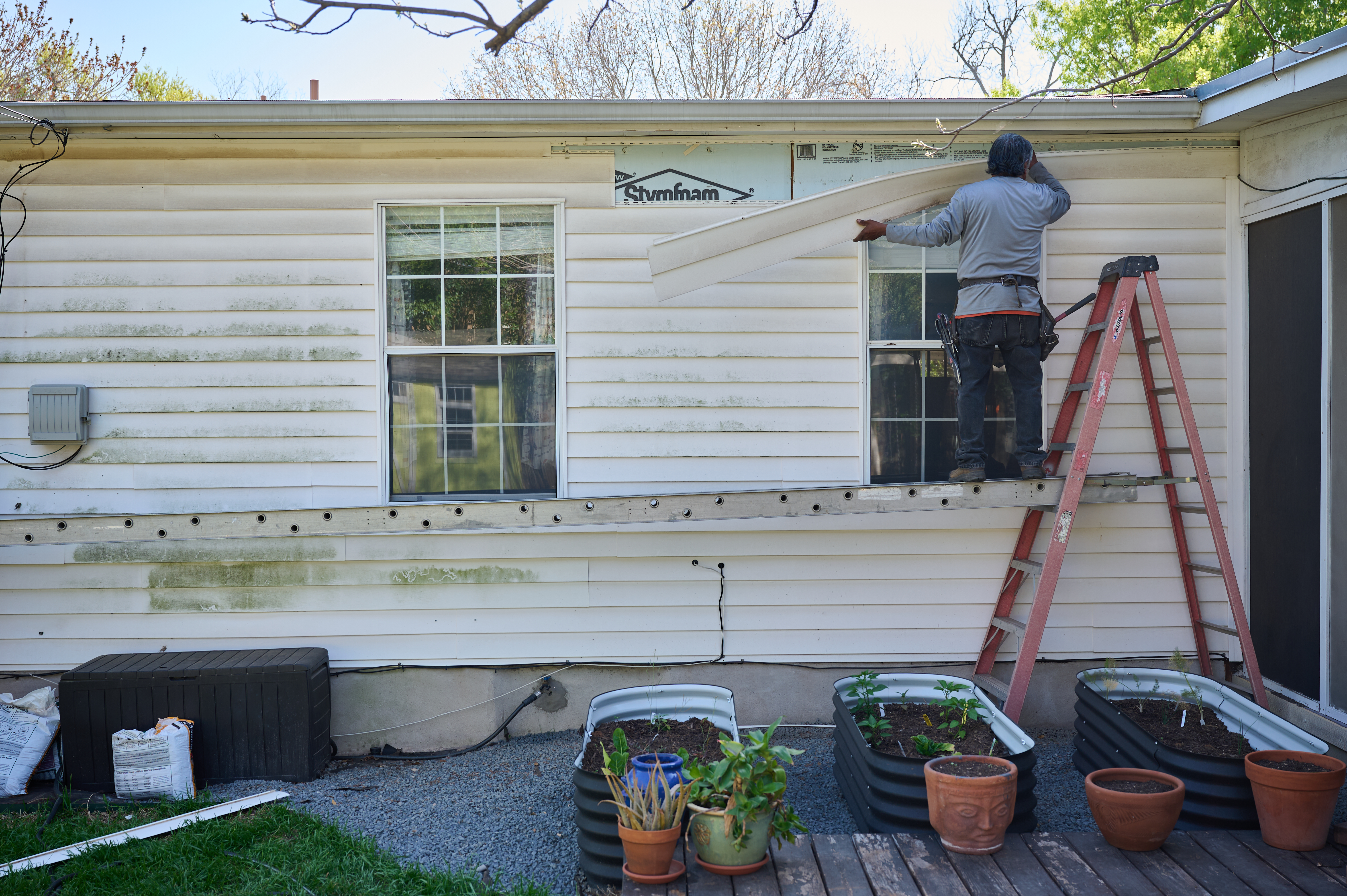
Siding replacement costs around $11,000 on average, but several factors influence what you’ll pay. Our guide breaks down all the siding cost factors.
Stucco can look beautiful on a home, but maintaining it can be tricky


Stucco has a distinctive, textured appearance that can make for a beautiful home exterior. And stucco is more than just good looks—it also has strong fireproofing capabilities. But there are some drawbacks to consider before choosing stucco for your siding, too. Here’s what to keep in mind.
While some siding installations and maintenance can be a DIY project, stucco exteriors are better left to the pros. There are typically several layers to a stucco exterior, and a poor application can lead to problems down the road.
Some stucco exteriors are flashed, meaning they contain layers of weatherproof material. If the flashing isn’t installed properly, water can seep into it during a rainstorm. Waterlogged stucco is not a good look for a house and can also lead to mold growth.
This is why it pays to hire a local stucco professional, who knows how to install each layer of stucco for a long-lasting finish. Keep in mind, though, that stucco repairs cost $60 to $120 per square foot, according to HomeAdvisor, so spotting damage early can cut down on pricey home improvements.

To be fair, you’ll want to carefully consider the color of any home’s exterior, as painting a house can be a time-consuming project that you’ll want to get right the first time. But choosing the right color matters even more when it comes to stucco.
That’s because you can’t simply start painting stucco—it’s got to be sandblasted first. This process involves a combination of sand and air blasted at high pressure to smooth a surface so it can be treated or painted. So unless you like the look of ladders and scaffolds in your yard, you’ll want to test out colors first before you commit to a final choice.
Wet weather can pose a serious problem to stucco homes, which is why you’ll find them more in dryer climates. Whenever it rains or snows, you’ll need to ensure that your stucco finish doesn’t get too wet, because it will lead to cracking and possibly even mold growth.
One of the best ways to keep water from pervading any home’s exterior is to point gutters and downspouts away from the home to let the water run off after a storm. Another way is to weatherproof doors and windows so that rain and melting snow can’t get in.
After major rain storms, you should inspect your home’s exterior for any signs of water damage and contact a professional near you immediately if there’s any hint of trouble.
While it’s a good idea not to plant flowers or bushes directly against any type of foundation, it’s super important to avoid this if you have a stucco exterior. When moist soil, be it from a recent rainfall or a dousing with a garden hose, comes in contact with the stucco, it causes the home’s exterior to crack.
While cracks can certainly be repaired if addressed quickly, plot your garden and landscaping carefully. Don’t plant too close to your home, or create a moisture barrier to keep water away.

Just as you have concerns about common issues with stucco, so will potential home buyers. This is more than curb appeal, though; this is about the integrity of your home. Stucco homes in a humid or wet climate might take longer to sell than homes with vinyl or wood siding. If you are looking to put your house on the market, a refurbished stucco exterior will give buyers peace of mind that they won’t have an extensive and expensive home improvement project to tackle shortly after they move in.
From average costs to expert advice, get all the answers you need to get your job done.

Siding replacement costs around $11,000 on average, but several factors influence what you’ll pay. Our guide breaks down all the siding cost factors.

Love the rustic look of log cabins but want a more durable siding? Use this vinyl log siding cost guide to see if this is a good alternative for your home.

Not sure how much vinyl siding costs? To prepare your budget for an upcoming siding project, read on to learn about average supply and labor costs.

Regularly cleaning vinyl siding helps your house look better and last longer. Find out how you can tackle this DIY project on your own.

Picking between Hardie board and traditional cement board siding? Our comparison guide will help you decide.

Choosing the right siding can boost your curb appeal and protect your home. Our guide explores 12 siding options to help you decide.